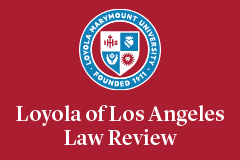United We Stand, Disparate We Fall: Putting Individual Victims of Reverse Redlining in Touch with Their Class
Start Date
24-3-2010 1:45 PM
Description
Reverse redlining is a form of illegal lending discrimination in which lenders target minority communities for unfair, overpriced loans. Most often, plaintiffs bring reverse redlining claims under a disparate impact theory, which does not require the plaintiff to show discriminatory intent and instead relies on a showing of statistical disparities to state a primafacie case. However, because this theory is predicated on abstract statistical information instead of facts from the plaintiffs’ actual experiences, plaintiffs and their attorneys fail to recognize reverse redlining claims. Also, plaintiffs who do recognize their claims lack the resources to successfully do the detailed and extensive statistical analysis required to state a prima facie case. Therefore, legislative action is needed to shift the primary burden of preventing reverse redlining from private plaintiffs to government agencies better equipped to investigate and pursue reverse redlining.
United We Stand, Disparate We Fall: Putting Individual Victims of Reverse Redlining in Touch with Their Class
Reverse redlining is a form of illegal lending discrimination in which lenders target minority communities for unfair, overpriced loans. Most often, plaintiffs bring reverse redlining claims under a disparate impact theory, which does not require the plaintiff to show discriminatory intent and instead relies on a showing of statistical disparities to state a primafacie case. However, because this theory is predicated on abstract statistical information instead of facts from the plaintiffs’ actual experiences, plaintiffs and their attorneys fail to recognize reverse redlining claims. Also, plaintiffs who do recognize their claims lack the resources to successfully do the detailed and extensive statistical analysis required to state a prima facie case. Therefore, legislative action is needed to shift the primary burden of preventing reverse redlining from private plaintiffs to government agencies better equipped to investigate and pursue reverse redlining.


